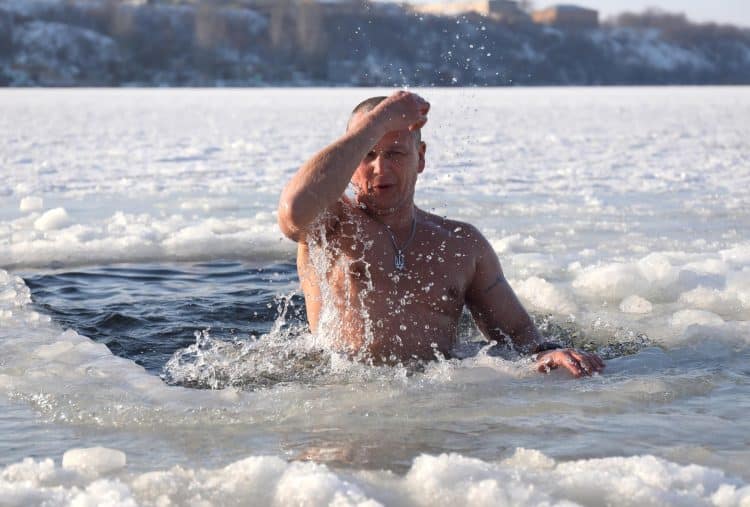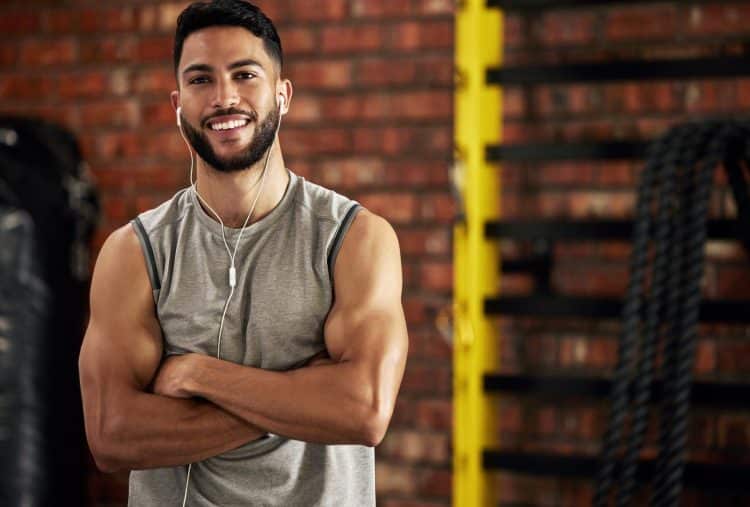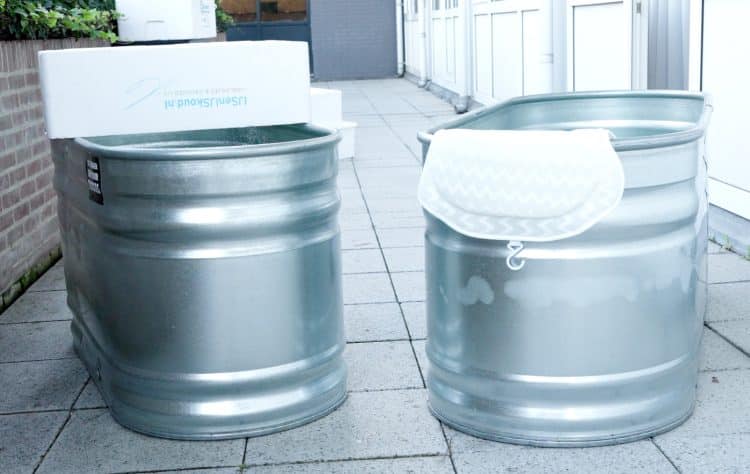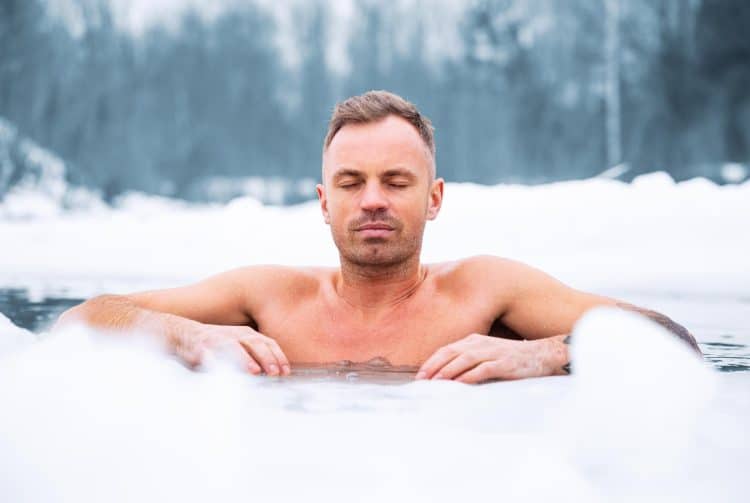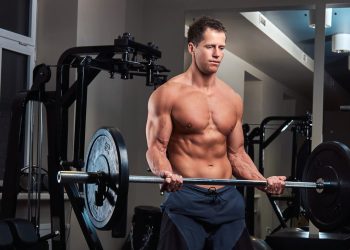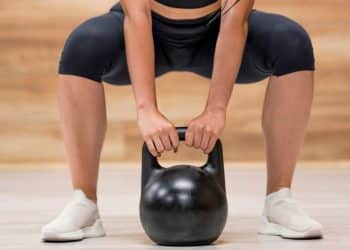Not long ago, jumping into an ice bath after a workout was considered a fringe concept that only extremists would contemplate. As a result of recent research, the influence of cold therapy guru Wim Hoff, and the widespread adoption by pro sports teams and players, ice baths have now entered the mainstream.
The popularity of cold therapy has created a market for ice baths. The problem is that most of the ice baths on the market are expensive and beyond the reach of an average person.
Fortunately, making your own perfectly functional ice bath is not difficult. In this article, you will learn how to undertake your DIY ice bath project step-by-step.
What is Cold Therapy?
Cold therapy involves immersing oneself in freezing temperatures to create the mild stress that brings on health benefits. It may include immersing yourself in an ice bath, a cold lake, having a cold shower, or having a cryotherapy chamber session.
The cold stress that results from cold water therapy is referred to as a kind of hormetic stress that activates several genetic pathways that help us deal with stress.
Level Up Your Fitness: Join our 💪 strong community in Fitness Volt Newsletter. Get daily inspiration, expert-backed workouts, nutrition tips, the latest in strength sports, and the support you need to reach your goals. Subscribe for free!
How Does Cold Benefit the Body?
When the human body experiences extreme stress, it releases a neurotransmitter called norepinephrine. This is a feel-good chemical that improves mood, attention, and focus.
One study showed that spending twenty seconds in a 4.4 degrees Celsius ice bath increased norepinephrine levels by 200–300%. [1]
Norepinephrine causes vasoconstriction, where the blood vessels constrict to preserve body heat. Another method the body uses to conserve heat is to speed up the process of mitochondrial biogenesis in fat and muscle tissue. That means that new mitochondria are produced. Mitochondria are the powerhouse of the cells.
The increased energy generation that results from mitochondrial biogenesis increases body temperature and burns more calories. [2]
Increased mitochondria in muscle tissue also allow a person to use oxygen more effectively, and, as a result, aerobic capacity improves.
Cold Therapy & Longevity
Several studies conducted on animals show that cold therapy can promote longevity. In one study with flies, a reduction in their environmental temperature from 27 to 21 degrees Celsius doubled their life spans. Similar studies on other creatures have found a negative correlation between temperature and lifespan. [3]
Researchers have theorized that the increased life span resulting from cold therapy could be due to the hormesis theory. This refers to the process of introducing a shock to the body to elicit a reaction and prepare it for an even more acute form of stress going forward. This is comparable to how our muscles become bigger and stronger with weight training. [4]
The body’s reaction to cold water therapy includes a metabolic rate decrease. As a result, there are fewer metabolic waste products to cause oxidative stress. [5]
Inflammation, which contributes to many illnesses and disorders, can be reduced with cold water therapy. Norepinephrine lowers inflammation by reducing inflammatory cytokines that lead to inflammatory reactions, including arthritis and the inflammation-causing chemical TNF-Alpha. [6]
The immune system may benefit from cold shock therapy, as it increases the production of white blood cells, including cytotoxic T cells. [7]
5 Ice Bath Benefits
Here are five advantages of ice water plunges:
- Improved Circulation: When you plunge into ice-cold water, your blood vessels constrict to preserve energy. This reduces blood flow to the skin and extremities, directing more blood to the vital organs and deeper tissues.
- Enhanced Insulin Sensitivity: Greater insulin sensitivity allows for greater glucose clearance from the bloodstream, improving metabolic health. In one study conducted on people with type 2 diabetes, a ten-day period of cold therapy resulted in a 10% increase in insulin sensitivity. [8]
- Stress Reduction: Ice baths decrease levels of the stress hormone cortisol while simultaneously increasing dopamine and norepinephrine levels. Cold water therapy has been shown to produce a calming effect on the mind and body. This helps alleviate stress and anxiety. [9]
- Improved Workout Recovery: Cold water therapy has become a vital part of the recovery process for many professional athletes. That’s because some solid research supports its ability to reduce muscle soreness after a workout. In one study, cold water therapy was more effective than cryotherapy in reducing delayed onset muscle soreness (DOMS) post-workout. [10]
- Pain Reduction: Ice bath treatment has been shown to help alleviate both short-term and long-term pain. The first way it does this is by reducing inflammation, which is a pain contributor. The best way to use an ice bath to reduce inflammation is to switch back and forth between hot and cold therapy. Cold water therapy may also block certain nerve signals that cause pain. [11]
Ice Bath Cautions
Here are seven things to be aware of before taking an ice bath:
- Risk of Hypothermia: Whenever you take a cold plunge, you risk hypothermia as your body loses heat faster than it can create it. Symptoms of hypothermia include confusion, shivering, and irregular heartbeat.
- Adapt Gradually: To avoid hypothermia, start with short sessions and gradually increase your time as your body adapts.
- Pre-existing Conditions: If you have pre-existing medical conditions like heart problems, cold allergies, or Raynaud’s disease, you must talk with your doctor before beginning ice bath therapy.
- Cold Shock Response: A potentially dangerous condition known as cold shock response may occur when a person enters extremely cold water. It involves a sharp pulse rate and blood pressure increase, particularly for those with pre-existing heart problems. To avoid the cold shock response, enter the ice bath slowly, one foot at a time, rather than plunging in.
- Supervision: Make sure someone can regularly check you when you’re in the ice bath. People have been known to pass out in ice baths, which can be fatal if there’s no one to help out.
- Hygiene: Make sure your ice bath is regularly cleaned and properly maintained, especially if more than one person uses it. This will minimize the risk of a skin or bacterial infection.
- Post-Bath Warm-up: You must gradually warm up your body once you get out of the ice bath. Do this with blankets, clothing, and hot drinks.
4 Ways to Make Your Own DIY Ice Bath
Now that we’ve covered the benefits and cautions of ice baths, let’s get down to the nitty-gritty of how to make your own ice bath, potentially saving thousands of dollars. Here are four popular and innovative methods to make an ice bath:
Deep Freezer Ice Bath
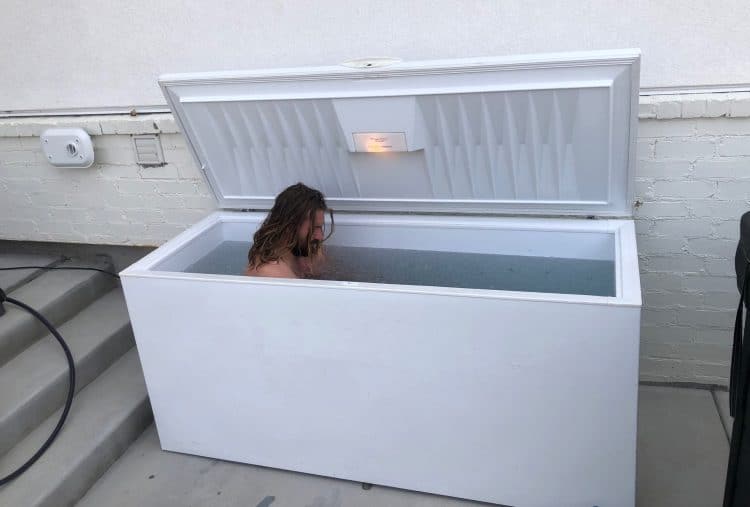
What You’ll Need:
- A deep freezer, new or used
- Waterproof sealant (must adhere to metal)
- Plumber’s tape
- Temperature gauge
- Wall mount plug-in wall timer
- Bags of ice
Step-by-Step Guide:
- Waterproof the deep freezer: Spray waterproof sealant on the inside corners of the deep freeze and other areas where two faces meet. Unscrew the drainage plug at the bottom, the deep freeze, and wrap the thread with the plumber’s tape. Reinsert the plug. If the deep freeze also has an outside drainage plug, repeat the process on it. Allow 24 hours for the sealant to set.
- Fill the unit with water: Place a hose in the deep freezer and fill it to a couple of inches. Then, stop the water and check for any signs of water leaks. If you find them, drain the water and reapply the sealant, giving it another 24 hours to dry. Carefully continue filling a couple of inches at a time, continually checking for water leaks.
- Add ice: During the filling process, add two bags of ice.
- Get the right temperature: Plug the freezer in and monitor it until the temperature is 50°F (10°C). Now plug your wall-mount plug-in timer into the wall socket and the freezer cord. Set the timer so that the freezer is powered for two hours during the day and another two hours at night time. This will ensure that the temperature remains at your desired level. Adjust these times through trial and error.
Garden Waste Bin Ice Bath
What You’ll Need:
- Large garden waste bin
- Ice bags or ice packs
- Cold water
- Thermometer
Step-by-Step Guide:
- Choose a location: Decide where you will situate your ice bath. Choose a flat, stable, and debris-free outdoor area in your yard.
- Clean the bin: Give the bin a thorough clean, using a sanitizer to ensure it is contaminant-free.
- Fill with cold water: Use your garden hose to fill the bin. Stop when you reach a comfortable level, allowing room to add ice without water spilling out.
- Add ice: Begin pouring ice into the bin. Check the temperature as you go. The ideal temperature for you will depend on your ice bath experience. Temperatures between 50°F to 59°F (10°C to 15°C) are standard.
Stock Tank Ice Bath
A metal stock tank makes an ideal ice bath. You can purchase it from a farm supply store for about $150.
What You’ll Need:
- Metal stock tank
- Ice bags
- Temperature gauge
- Cold water
- Plumber’s tape
Step-by-Step Guide:
- Find a location for your metal tank ice bath. It can be indoors or outdoors, such as on a deck.
- Position the ice bath in the chosen space, ensuring it is level.
- Locate the drainage plug on the bottom of the tank. Remove it and wrap the plumber’s tape around the threading. Replace the plug.
- Fill the tank using your garden hose to the desired level, remembering to allow space for ice.
- Add ice, checking constantly to achieve the desired temperature of between 50°F to 59°F (10°C to 15°C).
Inflatable Pool Ice Bath
If you’re short on space for your ice bath, an inflatable pool can be a good option. You can pick one up for less than $50 on Amazon.
What You’ll Need:
- Inflatable pool
- Ice bags
- Temperature gauge
- Cold water

Step-by-Step Guide:
- Find a flat, level location to set up your inflatable ice bath. Make sure that there are no sharp objects nearby that could puncture the pool.
- Unfold the pool, lay it out, and inflate it according to the provided instructions.
- Use a garden hose to fill the pool with cold water.
- Add ice progressively, checking with a temperature gauge to bring the temperature to the desired level of between 50°F and 59°F (10°C to 15°C).
Make Your Own Ice
Unless you use a deep freezer to keep your water at the ideal temperature, your biggest challenge will be maintaining the right temperature. Buying ice bags every day will be very costly. Fortunately, there’s a more cost-effective alternative — make your own ice.
You’ll need a decent-sized freezer to make enough ice to keep a hundred gallons of water cool. I recommend buying a second-hand chest freezer if you don’t have one. Then, go to a department store and buy five plastic containers, each capable of holding about 10 pounds.
Fill the five containers with water and place them in the chest freezer. Then, after 24 hours, tip them into the ice bath. It doesn’t matter if all of the ice isn’t frozen solid. Wait about thirty minutes, and then take the plunge. Your ice bath should be at the ideal temperature.
Level Up Your Fitness: Join our 💪 strong community in Fitness Volt Newsletter. Get daily inspiration, expert-backed workouts, nutrition tips, the latest in strength sports, and the support you need to reach your goals. Subscribe for free!
7 Ice Bath Tips for Beginners
Follow these tips for a better ice bath experience:
- Pre-Entry Fire Breathing Technique: In the minute before entering the pool, begin breathing in and out deeply through your nose. Draw the breath from your belly, placing your hands on your tummy to feel it sucking in. Finish with a giant exhale, holding it while you get into the water.
- Bath Entry: Lower yourself gently into the pool while holding the exhale. Move your body slowly, keeping it as relaxed as possible.
- Face Dunk: Perform two or three gentle face dunks. This will activate the vagus nerve, which activates the parasympathetic nervous system. This slows down bodily processes and helps regulate your heart rate and breathing.
- Body Position: Rather than hunching your body up in the fetal position, which is the natural reaction to cold water, stretch your body out to open it up. This will also help activate the parasympathetic nervous system.
- Breathing in the Ice Bath: Now that you’re settled in the ice bath, perform box breathing. This involves four counts of inward breath, a four-count hold, a four-count outward breath, and a four-count hold. This is all done through the nose.
- Ice Bath Duration: Stay in the ice bath for two minutes. Gradually build your time to five minutes.
- Ice Bath Sets: You can do two to three sets of ice bath immersions. Once you get out, go through another 60 seconds of pre-entry fire breathing drill and repeat for another two to five minutes in the ice bath.
The Wim Hoff Method
Wim Hoff, mentioned at the outset, is dubbed the ‘Ice Man.’ Wim is a Dutch extreme athlete and wellness advocate who holds several world records related to cold exposure. The Wim Hoff Method comprises breathing exercises, cold exposure, and meditation. This method aims to promote healing, wellness, and happiness by subjecting the body to mild stress.
The Wim Hof Method’s breathing technique can promote mental clarity, calmness, and focus. This technique entails a series of regulated breathing exercises to ease anxiety and tension while fostering relaxation and enhancing mental clarity. By regulating the autonomic nervous system, these breathing exercises also lower the risk of chronic stress and the associated health issues.
Meditation promotes calmness, focus, mental clarity, and well-being, encourages tranquility, and enhances concentration and memory. Regular meditation helps strengthen a person’s emotional fortitude and lowers their vulnerability to mental health issues like depression.
The main elements of the Wim Hoff approach are:
Breathing Technique
- Sit or lie down in a comfortable position.
- Take 30 to 40 deep, rapid breaths, emphasizing the inhales.
- After the last breath, exhale fully and hold the breath for as long as possible.
- Inhale deeply and hold your breath for 10-15 seconds.
- Exhale and repeat the cycle for several rounds.
Cold Exposure
Follow the tips in the previous section for two to five minutes during an ice bath.
Meditation
Although Wim Hof himself doesn’t devote much time to conventional meditation techniques, he stresses the value of thinking, mindfulness, and mental control as components of his approach.
The Wim Hof meditation method is based on cultivating a positive outlook, mental fortitude, and conscious control over the body’s reactions. This is frequently described as “mind over matter.” Hof strongly believes people can improve their physiological functions and general well-being by developing a strong mental state.
You need to be totally present and involved in the moment to get the most out of the breathing exercises and cold exposure. To do this, you should remain focused, regulate your breathing, and have a positive attitude throughout the breathing exercises and while immersing yourself in the ice bath.
Hof encourages using visualization techniques as a part of the meditation process. This involves using your mind to conjure up ideas that encourage rest, well-being, and beneficial outcomes, such as sunbathing on the beach. Visualization can make you feel more prepared and in control when faced with difficult situations, such as exposure to the cold.
The Wim Hof Method heavily emphasizes intent and belief. Practitioners must have optimistic goals and faith in the method’s potential advantages. You may get better results by cultivating a positive outlook and having faith in your body’s capacity for growth and adaptation.
Compared to conventional meditation techniques, Hof’s method of meditation is relatively unstructured. He encourages his followers to find what works best for them through experimentation.
FAQs
Can an ice bath help me lose weight?
Yes, some research shows that exposure to cold boosts brown adipose tissue activity, which improves calorie expenditure. Brown fat’s main job is to warm up the body. Researchers concluded that repeatedly exposing people to low temperatures would be an appropriate and economical strategy for combating the obesity epidemic. [12]
Quivering and non-quivering thermogenesis are both induced by cold. These procedures quicken calorie consumption. Adiponectin, a protein that speeds up fat metabolism, is increased when exposed to cold temperatures. Obesity and low adiponectin levels are related.
People who are overweight and frequently exposed to the cold can train their bodies to convert white fat to energy.
According to a 2011 study, the cold can activate brown adipose tissue. When the temperature dropped to 64.4°F (18°C), brown fat was activated. This activation aims to raise the body temperature to its usual level. A greater amount of brown adipose tissue is activated when the temperature drops. [13]
Will cold therapy help me get a good night’s sleep?
Yes, there is some evidence that taking an ice bath or cold shower before bed can improve the quality of your sleep. Cold exposure boosts the release of norepinephrine. Your rapid eye movement (REM) sleep is triggered by this hormone, which also affects your sleep and wake cycles. An increase in energy and a calmer state of mind may also follow the release of endorphins that come with cold therapy. Together, these responses can assist you in falling asleep and into deeper REM sleep.
Is it safe for children to use an ice bath?
Ice baths for kids are not recommended. Children’s bodies are less developed than those of adults, making them more susceptible to temperature variations. Therefore, cold bath therapy on youngsters must be done with great care. Check with the child’s doctor before starting them on cold water therapy. Pay close attention to the child’s reactions to the immersion and stop if needed. Never force a child to stay in longer than they want.
More research is needed on the effects of immersion in cold water on children’s growth and development. An unknown long-term impact on a child’s physiological development may result from exposing them to severe temperature changes.
There are safer ways to help kids experience cold exposure besides ice baths, like pouring cold water or applying cold compresses. These techniques might offer some advantages while avoiding the dangers of whole-body ice baths.
What are the dangers of cold water therapy?
While cold water therapy is safe for most people, there are some potential hazards. These include hypothermia resulting from long-term cold exposure. Hypothermia happens when the body loses heat faster than it can generate it. Symptoms include shivering, numbness, mental confusion, and inability to speak clearly.
Some people may experience the cold shock response when immersed in an ice bath. This involves a rapid heart rate increase and rapid breathing. If you experience this response, get out immediately.
Immersion in cold water can be stressful on the heart. Blood arteries narrow, and the heart rate rises, potentially raising blood pressure and raising the risk of complications related to the heart, especially in people with cardiovascular issues. Cold water immersion can cause shallow and fast breathing, which increases the danger of drowning and water inhalation.
Each person’s tolerance for cold varies, and reactions might be very diverse. What is safe for one individual may be hazardous for another.
More DIY:
- DIY Kettlebells 2025: Build Your Own for a Fraction of the Price
- Forget Commercial Protein Bars — 6 Homemade Protein Snacks for Cleaner Eating and Better Nutrition
- Fitness on a Budget: Affordable Ways to Stay Fit in the New Year
- DIY Dumbbells — 6 Sturdy, Homemade Weight Ideas For Any Workout
- How To Clean Horse Stall Mats in Home Gyms
- 6 DIY Homemade Weight Bench Ideas – The Ultimate Guide
- 6 DIY Weight Plate Storage Ideas For Your Home Gym
- 7 Easy DIY Barbell Holder Ideas For Your Home Gym
Summary
An ice bath has several health advantages, including better immunity, weight loss, stress reduction, and quicker recovery after workouts. Now, you don’t have to spend an exorbitant amount of money to reap these benefits.
This article details four cost-effective DIY ice bath options. Determine which is the most practical for you, and take it on as a weekend project.
References
- Leppäluoto J, Westerlund T, Huttunen P, Oksa J, Smolander J, Dugué B, Mikkelsson M. Effects of long-term whole-body cold exposures on plasma concentrations of ACTH, beta-endorphin, cortisol, catecholamines and cytokines in healthy females. Scand J Clin Lab Invest. 2008;68(2):145-53. doi: 10.1080/00365510701516350. PMID: 18382932.
- Miquel J, Lundgren PR, Bensch KG, Atlan H. Effects of temperature on the life span, vitality and fine structure of Drosophila melanogaster. Mech Ageing Dev. 1976 Sep-Oct;5(5):347-70. doi: 10.1016/0047-6374(76)90034-8. PMID: 823384.
- Kelly MA, Zieba AP, Buttemer WA, Hulbert AJ. Effect of temperature on the rate of ageing: an experimental study of the blowfly Calliphora stygia. PLoS One. 2013 Sep 3;8(9):e73781. doi: 10.1371/journal.pone.0073781. PMID: 24019937; PMCID: PMC3760806.
- Olsen, A., Vantipalli, M.C. & Lithgow, G.J. Lifespan extension of Caenorhabditis elegans following repeated mild hormetic heat treatments. Biogerontology 7, 221–230 (2006). https://doi.org/10.1007/s10522-006-9018-x
- Keil G, Cummings E, de Magalhães JP. Being cool: how body temperature influences ageing and longevity. Biogerontology. 2015 Aug;16(4):383-97. doi: 10.1007/s10522-015-9571-2. Epub 2015 Apr 2. PMID: 25832892; PMCID: PMC4486781.
- Gagnon, D. D., Gagnon, S. S., Rintamäki, H., Törmäkangas, T., Puukka, K., Herzig, H., & Kyröläinen, H. (2014). The Effects of Cold Exposure on Leukocytes, Hormones and Cytokines during Acute Exercise in Humans. PLOS ONE, 9(10), e110774.
- Janský L, Pospísilová D, Honzová S, Ulicný B, Srámek P, Zeman V, Kamínková J. Immune system of cold-exposed and cold-adapted humans. Eur J Appl Physiol Occup Physiol. 1996;72(5-6):445-50. doi: 10.1007/BF00242274. PMID: 8925815.
- Remie CME, Moonen MPB, Roumans KHM, Nascimento EBM, Gemmink A, Havekes B, Schaart G, Kornips E, Joris PJ, Schrauwen-Hinderling VB, Hoeks J, Kersten S, Hesselink MKC, Phielix E, Lichtenbelt WDVM, Schrauwen P. Metabolic responses to mild cold acclimation in type 2 diabetes patients. Nat Commun. 2021 Mar 9;12(1):1516. doi: 10.1038/s41467-021-21813-0. PMID: 33750795; PMCID: PMC7943816.
- Mooventhan A, Nivethitha L. Scientific evidence-based effects of hydrotherapy on various systems of the body. N Am J Med Sci. 2014 May;6(5):199-209. doi: 10.4103/1947-2714.132935. PMID: 24926444; PMCID: PMC4049052.
- Abaïdia AE, Lamblin J, Delecroix B, Leduc C, McCall A, Nédélec M, Dawson B, Baquet G, Dupont G. Recovery From Exercise-Induced Muscle Damage: Cold-Water Immersion Versus Whole-Body Cryotherapy. Int J Sports Physiol Perform. 2017 Mar;12(3):402-409. doi: 10.1123/ijspp.2016-0186. Epub 2016 Aug 24. PMID: 27396361.
- Mooventhan A, Nivethitha L. Scientific evidence-based effects of hydrotherapy on various systems of the body. N Am J Med Sci. 2014 May;6(5):199-209. doi: 10.4103/1947-2714.132935. PMID: 24926444; PMCID: PMC4049052.
- Greenhill, C. 6 August 2013. Obesity: Cold exposure increases brown adipose tis- sue in humans.
- van Marken Lichtenbelt, W. 17 October 2011. Human Brown Fat Obesity.

